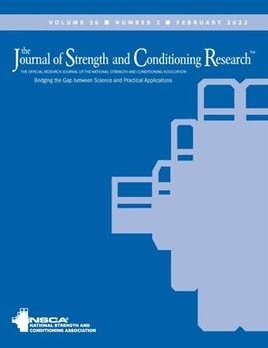Castagna C1, Impellizzeri FM2, Belardinelli R3, Abt G4, Coutts A5, Chamari K6, D’Ottavio S1
1, School of Sport and Exercise Sciences, Faculty of Medicine and Surgery, University of Rome Tor Vergata, Rome, Italy; 2, Human Perfomance Lab, Sport Service Mapei, Italy; 3, Department of Cardiovascular Rehabilitation and Prevention, Hospital ‘’G.M. Lancisi’’, Ancona, Italy; 4, St. Martin’s College, Lancaster, United Kingdom; 5, Human Perfomance Laboratory, University of technology, Sydney, Australia; 6, Unitè Reserche, ‘’Evaluation, Sport, Sanitè’’, National Center of Medicine in Sport (CNMSS), El Menzah, Tunisia

This study examined the validity of the Yo-yo Intermittent Endurance Test (Level 1; YYIET) as indicator of aerobic power in youth soccer players. Cardiorespiratory responses were determined in 18 moderately trained nonelite youth soccer players (age, 16.6 +/- 0.8 years; height, 178.7 +/- 6.2 cm; body mass, 69.8 +/- 6.0 kg; VO2peak, 52.8 +/- 7.4 ml x kg-1 x min-1) while performing the YYIET and an incremental treadmill test. Maximal heart rate (HRmax), respiratory exchange ratio (RER), O2 pulse, VO2peak, and maximal ventilation (VEmax) were measured. Group YYIET VO2peak, HRmax, RER, and O2 pulse were not significantly different from treadmill responses (p > 0.05). VEmax was significantly lower (p < 0.05) during the YYIET compared to the treadmill condition. No significant correlation was found between treadmill VO2peak and YYIET performance (p > 0.05). This study showed that the YYIET elicits peak VO2 and HR responses. However, YYIET performance results were not related to VO2peak measured in laboratory. Furthermore, the individual VO2peak reached during the TM did not reflect the VO2peak obtained during the YYIET, as shown by the large limits of agreement. As a consequence, compared to other shuttle run field tests, YYIET seems to be a weak indicator of aerobic power in youth moderately trained youth soccer player.
J Strength Cond Res. 2006 May;20(2):326-30.
PMID: 16689622 DOI: 10.1519/R-17144.1